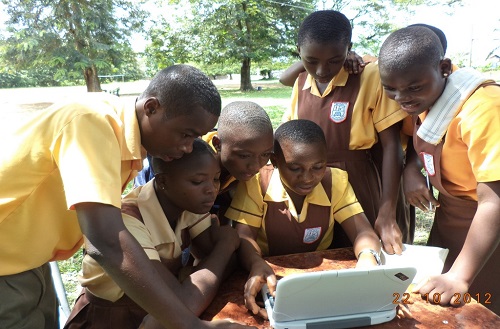
Digital Exclusion: Five million people in Ghana offline, census reveals
In the three months leading up to the census conducted between April and June 2021, a staggering five million individuals aged 15 years and older in Ghana were offline, according to data released in the 2021 Population and Housing Census Thematic Brief on Digital Exclusion by the Ghana Statistical Service. This accounts for approximately one in four (25.2%) people in that age group who did not use the internet.
Advertisement
The report highlights the significant digital divide across regions, with more than half of the population aged 15 years and older in the Savannah (58.7%), North East (55.8%), and Northern (51.5%) regions not utilizing the internet. With the exception of the Greater Accra region, all other regions had over 10.0% of this age group offline during the three-month period.
Gender disparities in internet usage are also evident, with two in ten males (19.8%) not using the internet compared to three in ten females (30.3%) aged 15 years and older. The Savannah region stands out as the only region where more than half of the male population (52.0%) was offline. Conversely, five regions, including Savannah (65.4%), North East (63.6%), Northern (60.6%), Upper West (56.6%), and Upper East (54.6%), had more than half of their female population offline.
The data further reveals that certain districts have alarmingly high percentages of offline individuals. North East Gonja (76.7%), Karaga (73.9%), Mion (73.3%), and Gushegu Municipal (72.5%) districts had over 70% of the population aged 15 years and older not accessing the internet within the preceding three months. The disparity is stark when compared to Ayawaso West Municipal (4.1%), the district with the lowest percentage of its population offline, which is over 17 times lower than the aforementioned districts. A total of 211 out of 261 districts had more than 10,000 individuals aged 15 years and older offline. Notably, the Tamale Metropolitan Area (76,164), Nanumba North Municipal (61,293), Sagnarigu Municipal (59,054), East Mamprusi Municipal (58,248), and Gushegu Municipal (56,152) districts had more than 50,000 offline individuals.
Regarding smartphone ownership, the national data indicates that 4.9 million individuals aged 15 years and older did not possess a functional smartphone. Notably, the number of females (3.0 million) not owning smartphones was nearly double that of males (1.8 million). The percentage of the population without smartphones aligns closely with the percentage of those offline, with one in four (24.6%) individuals, two in ten males (19.2%), and three in ten females (29.6%) aged 15 years and older lacking a functional smartphone.
The regions with the highest percentage of the population aged 15 years and older not owning functional smartphones were Savannah (57.3%), North East (55.2%), and Northern (50.7%). Overall, 40 districts had over half of their population without functional smartphones, with North East Gonja (76.0%) being the district with the highest percentage of individuals without smartphones, followed by Karaga (73.0%), Mion (72.3%), and Gushegu Municipal (71.8%).
The Ghana Statistical Service released these findings on the 2023 World Telecommunication and Information Day, which is celebrated under the theme "Empowering the least developed countries through information and communication technologies."
